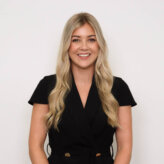
Record wait times and a buckling public health care system has driven more than 14 million Australians to join private health – but avoiding lengthy wait times isn’t the only allure.
It turns out, a person with an extras-only health insurance policy who has served their waits could save more than $1000 in a year in healthcare expenses that aren’t covered for them by the government’s Medicare system.
| Extras | What | Cover benefit | Out of pocket cost (with cover) | Annual limit of cover | Wait time | Cost without cover |
| General dental | 1st standard clean 2nd standard clean | 100% | $0.00 $0.00 | $650.00 | 2 months | $220.00 $220.00 |
| Major dental | Crown | 60% | $399.60 | $600.00 | 12 months | $999.00 |
| Optical | Prescription glasses | 100% | $0.00 | $200.00 | 6 months | $199.00 |
| Physiotherapy | Standard appointment | 60% | $40.00 | 2 months | $100.00 | |
| Chiropractor | Standard appointment | 60% | $36.00 | (Group-limit) $350.00 | 2 months | $90.00 |
| Osteotherapy | Standard appointment | 60% | $40.00 | 2 months | $100.00 | |
| Remedial massage | 1st standard apt 2nd standard apt | 60% | $42.00 $42.00 | $200.00 | 2 months | $105.00 $105.00 |
| Total | $599.60 | $2,138.00 |
Policy A was studied by Compare the Market, January 2023. The graph above reflects a policy A partnered dentist where one can access two free cleans per year. Cost without cover based on advertised service costs from providers in the South-East Qld region.
| Annual cost of Policy A | $442.40 |
| Total cost (with cover) | $1,042.00 |
| Total cost without cover | $2,138.00 |
| Difference in price | $1,096.00 |
Policy A for a hypothetical single Queenslander, with a tier 0 rebate costs $442.40 per year, no LHC and no age-based discount.
The policy cost plus the out of pocket expenses, equals $1,042 while someone who doesn’t have cover would wind up paying $2,138 for the exact same services. Of course, what can be saved from an Extras policy will vary from person to person depending on what treatments and services they require and the rebate structure of their policy.
Policy A covers treatments and services from the following common Extras categories: general dental, major dental, optical, physiotherapy, chiropractor, osteotherapy and remedial massage.
A lot of private health funds have partnered dentists that participate in gap cover schemes– meaning a one or twice a year a standard clean would essentially be free and fully covered by your private health fund.
According to the Australian Dental Association, people should visit the dentist every six months and with some private health policies, both of these visits to a gap cover dentist could be free, but someone without cover could be filling the pain, and potentially face a $440 bill.
Compare the Market’s Head of Health Lana Hambilton said the majority of health care services on the policy we reviewed provide a 60% rebate on treatments and services up to the specified limits for the category.
“Optical has 100% coverage, meaning if you needed a new pair of prescription glasses or sunglasses then the health fund would cover the whole cost up to the annual limit.
“There are two kinds of private health polices, one that has set benefits, and others have percentages benefits like the Policy A we studied.
“Someone who has a private health policy with percentage benefits will usually hit their limit quicker, but this could be the preferred insurance policy if you don’t plan on attending multiple physio or remedial massage appointments.
“The set benefits are when the insurer has a fixed monetary value for each service.
“There are a whole range of extras that people can include on their policy, such as orthodontics, endodontics, acupuncture, podiatry, orthotics, psychology, eye therapy, occupational therapy, speech therapy, hearing aids, dietetics, health aids and more”.
But Ms Hambilton encouraged people should focus on the extras they will benefit from including on their policy.
“For example, if you have bad eyesight then you might select optical as one of your extras.
“Or maybe you have a bad knee that plays up regularly, then you might choose a policy that covers physio or acupuncture.
“Maybe you have children who might need braces in the future, having an extras health insurance policy could help cover some of the cost of these expensive products and services once you have served waiting periods.
“Taking out extras cover can be worth it to help manage your out-of-pocket expenses”.
Customers also have the option to pay more for higher rebates. For example, Policy B that was studied from Compare the Market’s website, offers 70% back.
Therefore, instead of being $40 out of pocket for a standard physio appointment with Policy A, you would only have to pay $30 for a $100 session on Policy B.
Ms Hambilton said there are some policies which allow customers to pick and choose their extras, giving them the flexibility to be covered for what they actually want or need.
-Another policy studied, is a 60% back product that allows you to select any four eligible services to include on your policy.
“For someone who only needs or wants four services, this might be the beneficial policy for them.
“There are great range of options in the private health sector right now, but it’s important to note cover will vary from policy to policy.
“So that means there are a range of different inclusions, waiting periods, limits and rebates. So, the best fit really depends on the customers’ needs.
Ms Hambilton said although waiting periods vary, there are some insurers offering to waive 2 and 6 month waiting periods so that new members can claim some extras services straight away.
For more information, please contact:
Natasha Innes | 0416 705 514 | [email protected]
Compare the Market is a comparison service that takes the hard work out of shopping around. We make it Simples for Australians to quickly and easily compare and buy insurance, energy, travel and personal finance products from a range of providers. Our easy-to-use comparison tool helps you look for a range of products that may suit your needs and benefit your back pocket.








